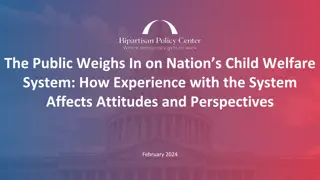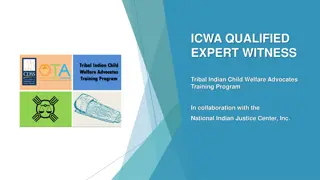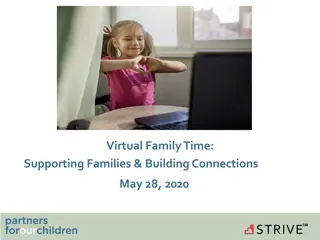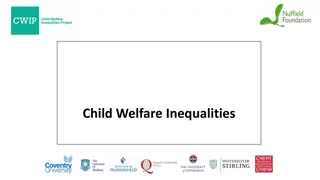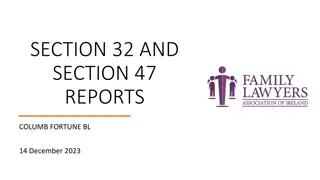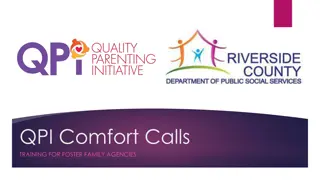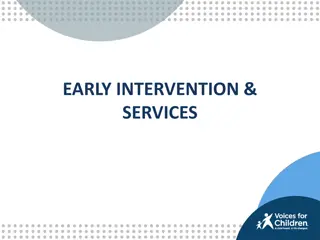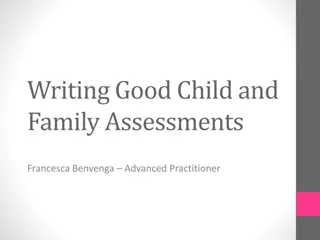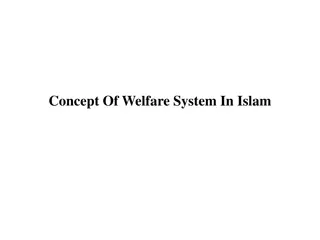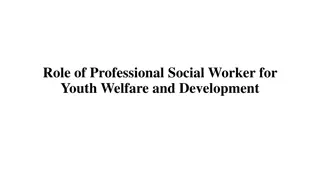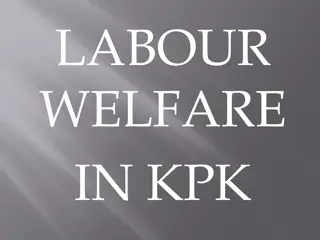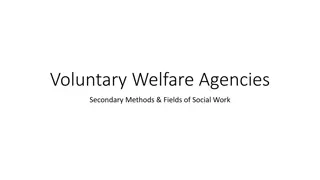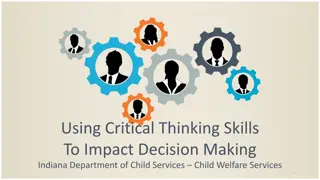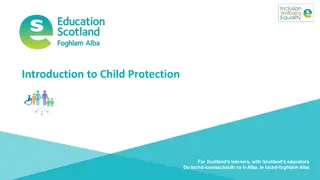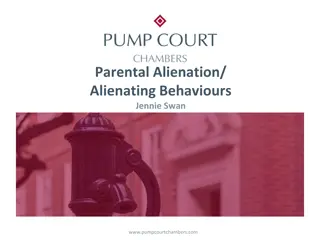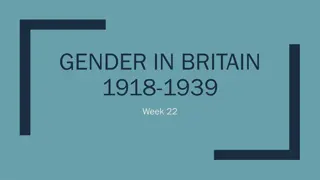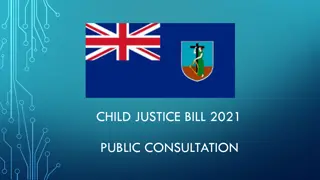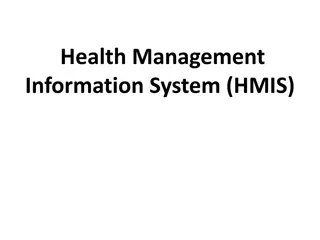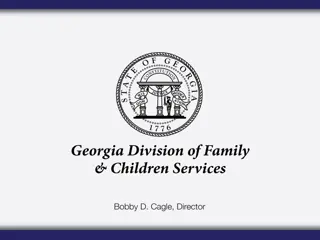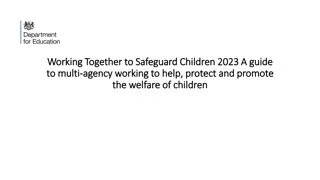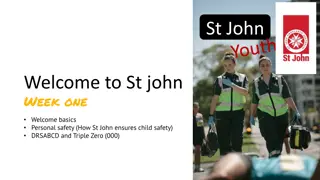Challenges and Opportunities in the Child Welfare System
Addressing challenges of disproportionality, proactive solutions, and keeping families together are key in the child welfare system. With a focus on family voice and support, success indicators include reduced referrals to foster care, improved permanency outcomes, and enhanced child well-being.
Download Presentation

Please find below an Image/Link to download the presentation.
The content on the website is provided AS IS for your information and personal use only. It may not be sold, licensed, or shared on other websites without obtaining consent from the author. Download presentation by click this link. If you encounter any issues during the download, it is possible that the publisher has removed the file from their server.
E N D
Presentation Transcript
Child Welfare System BY THE NUMBERS
Identified Challenges Disproportionality in every part of the child welfare system Opportunity to strengthen effective teaming, parent and child voice in decision making Ensuring proactive solutions as often as possible (rather than reactive) Keeping Families Together Avoid unnecessary removals Avenues of Opportunity Offerings of prevention services and supports Child and family teaming participation of the child, parent and caregiver Immediate and supported placement with relatives upfront family finding and immediate family support and services Keep children within their communities and families to avoid greater trauma Indicators of Success Reductions in referrals, substantiations, and entries into foster care Improve permanency and well-being outcomes Increased placement stability Improved health and mental health outcomes and other indicators of child well-being
Emergency Placement and Emergency Caregiver $: Child and Family Teaming and Upfront Family Finding: Prevention Supports: RFA or Child- Specific Approval. Law requires reasonable efforts to avoid removal + new funding to support prevention. If removal becomes necessary, child can be immediately connected with relative prior to the relative being approved as a resource family. Emergency Caregiver funding supports child from day of placement. Child and family voice regarding what is needed to avoid removal, identify family supports including a relative if removal becomes necessary, support family through reunification or other permanency. Level of Care Funding to Support Youth. Intensive Services Foster Care: Can support a child without necessitating placement change kin can be ISFC. Streamlined Access to Specialty Mental Health Services. Specialized Care Increments. Innovative Models of Care. Wraparound. Education Supports and FY Liaisons: School of origin rights, funding for transportation to school of origin. Supportive Services (Kinship Navigation): 2083 MOUs for Service Coordination: Education Developmental Services, Health Care, Behavioral Health. Reunification: Emergency Child Care Bridge, Respite, Support Groups, Classes, Extracurricular. - or - Flexible Approaches to Permanency.
Why We Have to Get this Right Disproportionality Within the Child Welfare System Racial Disparity Indices (General Population) Ethnic Group Disparity Compared with White Children along CW Continuum Black NativeAmerican Latino Asian/PI White
Percent of Meetings (n=99,939) Key Roles in Attendance Child and Family Teaming 88.7% Child Welfare Social Worker Bio Mother Data shows us that we have opportunities for more robust involvement and engagement of the parent, child, caregiver and other important family supports 56.3% 46.9% Child 38.7% Resource Parent 28.9% Bio Father 23.9% Other Family 12.8% Sibling
Level of Care to Support Youth in Family Settings Placement Type Foster Family Agency Resource Family Home Basic Level 2 Level 3 Level 4 ISFC 62% 18% 6% 6% 8% 67% 17% 5% 8% 4%
Since 2017 Why We Have to Get This Right: Because Focus on the Child s Family Works 53% increase in youth that have a first placement with a relative or extended family member 92% increase in youth whose predominant placement is with a relative or extended family member. 75% of youth that had their first placement with a relative and are still in care at 12 months are still with that relative
Placement with Siblings 51% of children with non- relatives are placed with all of their siblings 73% of children placed with relatives are placed with all of their siblings
Family Engagement Workable Solutions: Keeping families together Family Support Data informed











